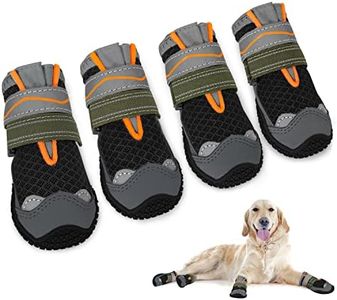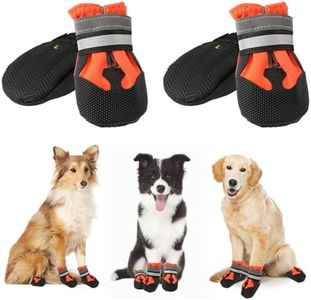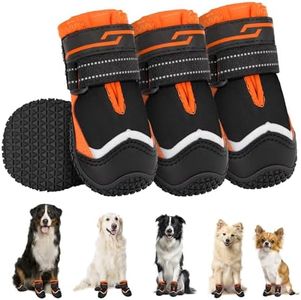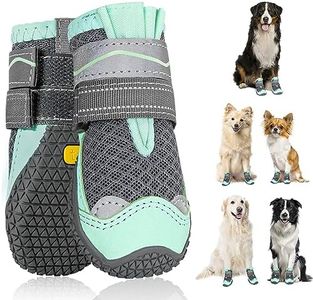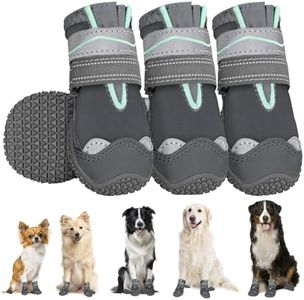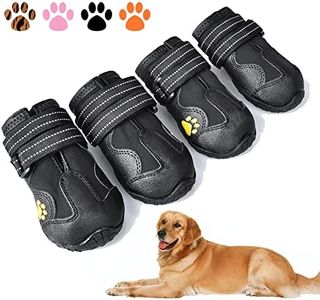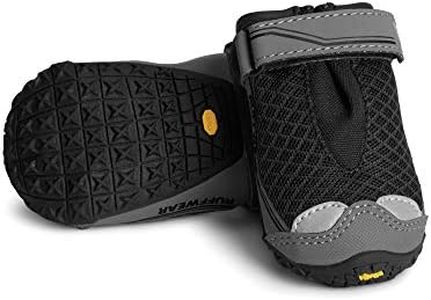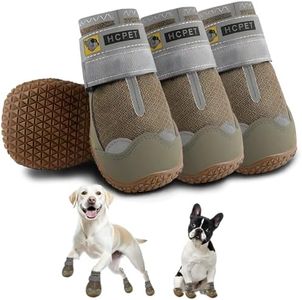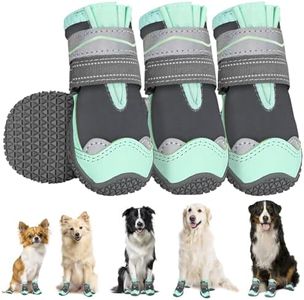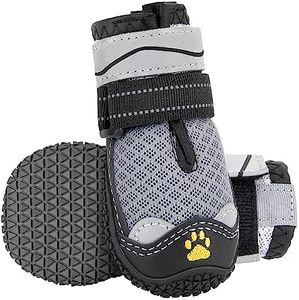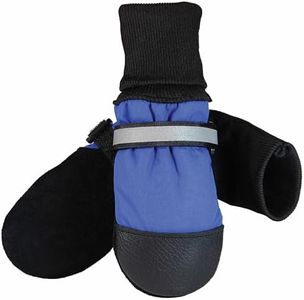We Use CookiesWe use cookies to enhance the security, performance,
functionality and for analytical and promotional activities. By continuing to browse this site you
are agreeing to our privacy policy
10 Best Dog Boots
From leading brands and best sellers available on the web.Buying Guide for the Best Dog Boots
Choosing the right dog boots can make a big difference in your dog's comfort and protection, especially if you take your pup on outdoor adventures or live in harsh climates. Dog boots help protect paws from rough terrain, hot pavement, snow, ice, and even chemicals like road salt. When picking the best dog boots, it's important to consider your dog's specific needs, the conditions they’ll be walking in, and how the boots will fit and function for their size and activity level.MaterialThe material of dog boots determines how durable, breathable, and weather-resistant they are. Boots can be made from rubber, fabric, or a mix of materials. Rubber boots are great for wet or muddy conditions because they're waterproof, but they may not let your dog's paws breathe as easily. Fabric boots, like those made from nylon or polyester, are often more comfortable and flexible but may offer less protection against the elements. Look for materials that match the conditions you'll be facing and consider if your dog tends to get cold or hot paws easily.
Sole TypeSoles are the bottom of the boots and they affect grip, comfort, and protection. Thick, textured soles offer more grip and are better for rugged terrain or slippery surfaces. Thinner soles give a closer-to-the-ground feel and work well if your dog is walking on smoother paths. For dogs that need extra traction on ice or slick floors, boots with anti-slip or rubber soles are ideal. Match the sole thickness to the adventurousness of your walks—harder surfaces and active outings need sturdier soles, while casual walks can use lighter ones.
Fit and FasteningA good fit ensures the boots stay on and are comfortable for your dog. Boots often come with adjustable straps, Velcro, or zippers to keep them secure. Measure your dog’s paws as recommended by the manufacturer to get the right size. If boots are too loose, they can fall off; too tight, and they can cause discomfort. Think about your dog’s tolerance—some fastening systems are quicker and less fussy, which can help with dogs who don’t like having their paws handled.
WaterproofingWaterproof boots help keep your dog’s paws dry in rain, snow, or muddy conditions. Some boots are fully waterproof, while others are only water-resistant, meaning they can handle some moisture but not full submersion. If you often walk in wet conditions or want to prevent ice balls forming between your dog's toes, prioritize waterproof boots. For mainly dry or mild weather walks, water-resistance or even breathable (but not waterproof) options may be enough.
InsulationInsulated boots offer warmth for cold weather. Some have fleece or soft lining to keep paws warm in snow or frigid temperatures, while others are unlined and better for mild climates. Dogs with thin fur or those sensitive to cold may benefit from insulated boots. If your climate is mostly warm, go for uninsulated boots to avoid overheating your dog’s paws.
Ease of Putting On/OffHow easily you can get the boots on and off matters, especially if your dog is squirmy or impatient. Wide openings, stretchy materials, and simple fasteners can make the process easier. Consider your own preferences and your dog’s patience levels: if your dog is new to boots or resists, the simpler the boot is to put on, the better the experience will be for both of you.
